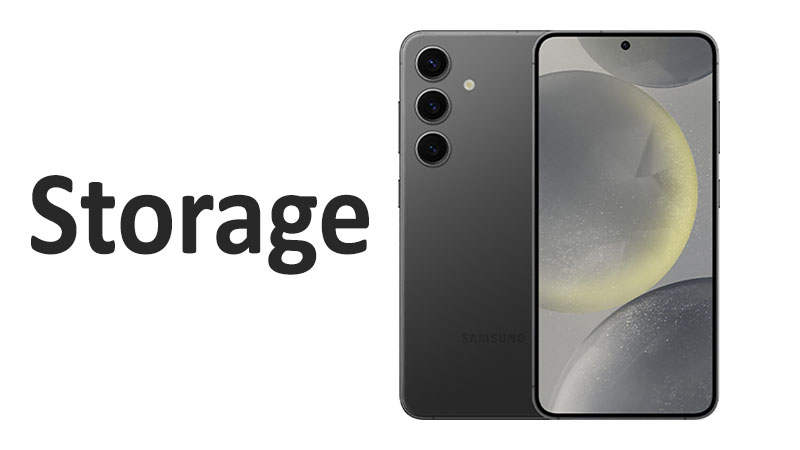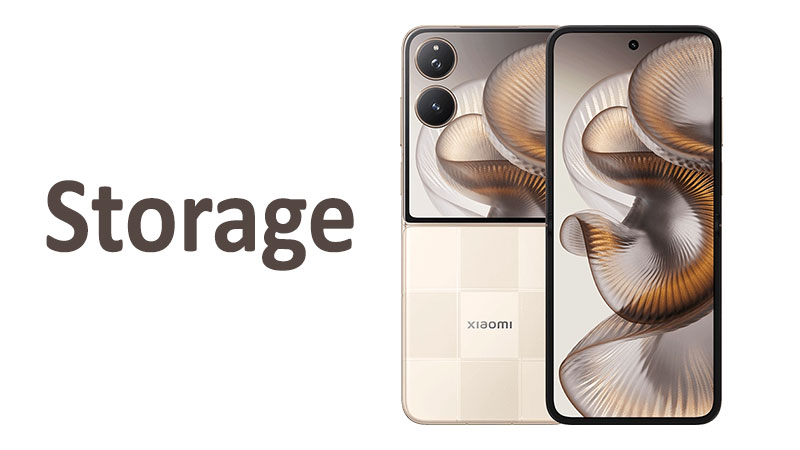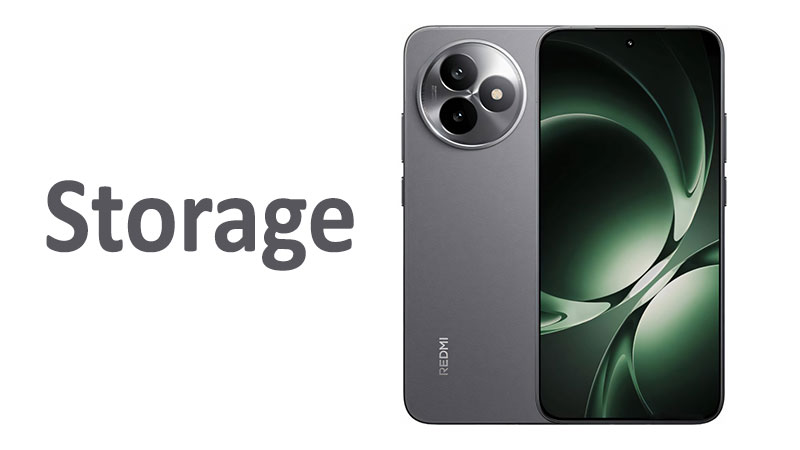When you’re choosing a new smartphone, the amount of storage is a crucial factor. It’s not just about how many photos and apps you can fit. It’s also about speed, performance, and long-term value. The Samsung Galaxy S24 storage options are a key part of its overall appeal. This article explores everything you need to know about the storage on the Galaxy S24 series, from its capacity and technology to its real-world performance.
Understanding Galaxy S24 Storage Capacity
The Samsung Galaxy S24 series comes in a range of storage configurations. This gives buyers a choice to match their needs and budget. The base model, the Galaxy S24, is available in 128GB, 256GB, and 512GB options. The Galaxy S24+ starts at 256GB and goes up to 512GB. Finally, the top-tier Galaxy S24 Ultra is offered in 256GB, 512GB, and a massive 1TB version.
This tiered approach allows Samsung to cater to different types of users. A casual user who primarily uses social media and streams content might find the 128GB or 256GB models sufficient. Power users, content creators, and mobile gamers will likely benefit from the higher 512GB or 1TB options.
The Technology Behind the Storage: UFS 4.0 and UFS 3.1
Storage capacity is only one part of the story. The type of storage technology is equally important. It determines how fast your phone can read and write data. The Samsung Galaxy S24 series uses Universal Flash Storage (UFS), an industry standard for mobile devices. However, there’s a significant detail to be aware of.
The 128GB version of the Galaxy S24 uses UFS 3.1. All other storage variants across the entire S24 series—including the 256GB and 512GB S24, and all S24+ and S24 Ultra models—utilize the newer UFS 4.0. This distinction is vital for anyone considering the base model.
UFS 4.0 vs. UFS 3.1: A Specialized Comparison
The difference between UFS 3.1 and UFS 4.0 is not just a minor upgrade. It represents a generational leap in performance and efficiency.
- Speed: UFS 4.0 offers a significant boost in read and write speeds. Sequential read speeds are up to double that of UFS 3.1, reaching up to 4,200 MB/s. Sequential write speeds are also 1.6 times faster. This translates to quicker app loading, faster file transfers, and a more responsive overall user experience.
- Efficiency: UFS 4.0 is also more power-efficient than its predecessor. It uses less power for the same amount of data transfer. This can contribute to slightly better battery life, especially during intensive tasks.
While UFS 3.1 is by no means slow—it’s still incredibly fast—the UFS 4.0 standard offers a clear performance advantage. For most users, the difference may not be noticeable in everyday use. However, for those who regularly transfer large files, record high-resolution video, or play demanding games, the UFS 4.0 performance will be a welcome improvement.
Pros and Cons of the Galaxy S24 Storage
Pros:
- High-Speed UFS 4.0: The inclusion of UFS 4.0 on most models ensures top-tier performance. This is a crucial feature for a flagship device in 2024.
- Generous Capacity Options: The availability of up to 1TB of storage on the S24 Ultra caters to even the most demanding users and content creators.
- No Expandable Storage (Pro): For many, the absence of a microSD card slot is a “con,” but it can be seen as a “pro” for performance. Internal UFS storage is always faster and more reliable than a microSD card. This simplifies the user experience and prevents performance bottlenecks.
Cons:
- No MicroSD Card Slot: This is a major drawback for some. It means you cannot expand your storage after purchase. You must choose your storage capacity carefully from the start. This lack of flexibility is a significant decision point for potential buyers.
- UFS 3.1 on the 128GB Model: The fact that the base model uses a slower storage technology is a notable disadvantage. While the performance gap may be minor for light users, it’s a difference that exists. It can feel like a compromise on a premium device.
Important Points for a Buyer to Know
Choosing the right Galaxy S24 storage is a long-term decision. Here are some key points to consider before you buy.
- Think Long-Term: Samsung offers seven years of software updates for the S24 series. This means you will likely use this phone for many years. A 128GB model that seems sufficient today might fill up quickly with high-resolution photos, 8K videos, and large app installations over time. The “double storage” promotions often available at launch make the 256GB model the smarter choice.
- Cloud vs. Local Storage: If you are a heavy user of cloud services like Google Photos or OneDrive, you may not need as much local storage. However, relying solely on the cloud can be an issue when you don’t have an internet connection. Plus, high-resolution videos are often saved locally first before being uploaded.
- Video Recording: The Galaxy S24 is capable of recording in 8K resolution. This feature, while impressive, creates massive video files. A few minutes of 8K video can consume multiple gigabytes of storage. If you plan to use this feature, a higher storage model is a must.
- The “Base Model Trap”: The 128GB model is the cheapest option. However, with modern apps and high-quality media, 128GB can be restrictive. The slower UFS 3.1 adds another reason to consider at least the 256GB model. For a small price difference, you get double the storage and a faster, more future-proof technology.
Comparison with Previous Models and Competitors
Galaxy S24 vs. Galaxy S23:
The storage technology on the Galaxy S24 is a direct upgrade. The Galaxy S23 series also had the same UFS 3.1 vs. UFS 4.0 split, with the base 128GB model using the older standard. The S24 continues this trend. However, the S24’s overall performance improvements mean the UFS 4.0 is better utilized.
Galaxy S24 vs. iPhone 15:
Apple’s iPhone 15 series also lacks expandable storage and uses its own NVMe (Non-Volatile Memory Express) storage. The performance of NVMe is comparable to UFS 4.0, offering blazing fast speeds. Both Samsung and Apple have made a clear decision to prioritize the speed and reliability of internal storage over the flexibility of a microSD card. The iPhone 15 Pro Max offers a 1TB option, matching the S24 Ultra’s highest capacity. The base iPhone 15, however, also starts at 128GB.
Conclusion
The Samsung Galaxy S24 storage is a mix of impressive technology and a few trade-offs. The UFS 4.0 standard provides exceptional speed and efficiency, making the S24 series a top performer for demanding tasks. The lack of a microSD card slot, while frustrating for some, is a deliberate choice by Samsung to ensure optimal performance. The tiered storage options are well-suited for a variety of users.
For anyone considering a new Galaxy S24, the key decision is the storage capacity. While the 128GB base model is the most affordable, it comes with a slower UFS 3.1 chip and limited space for the long term. Given the longevity of the device, the 256GB model is the clear sweet spot. It offers UFS 4.0 technology, double the storage, and provides a much better return on investment over the phone’s lifespan. The 512GB and 1TB options are best reserved for those who know they will be shooting a lot of high-resolution video or downloading a large number of apps and media. Choose wisely, as this is a decision you’ll live with for years to come.
FAQ
No, the Samsung Galaxy S24 series does not have a microSD card slot for expandable storage.
For a light user who relies on cloud storage and doesn’t take many photos or videos, 128GB might be sufficient. However, for most users, 256GB is a safer and more future-proof choice.
UFS 4.0 is the latest Universal Flash Storage standard. It offers sequential read speeds of up to 4,200 MB/s and sequential write speeds of up to 2,800 MB/s, which is significantly faster than the previous generation.
All models of the Galaxy S24+, Galaxy S24 Ultra, and the 256GB and 512GB versions of the standard Galaxy S24 use UFS 4.0. Only the base 128GB Galaxy S24 uses the older UFS 3.1.
The 128GB Galaxy S24 uses the UFS 3.1 standard, while the 256GB model uses the faster UFS 4.0. This difference in technology results in faster read and write speeds on the higher capacity model.



